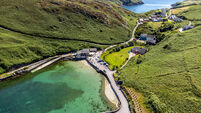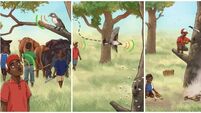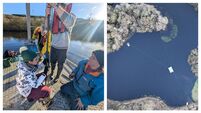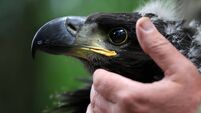Islands of Ireland: Cattle cross to graze on Inishleigh at low water

Sea bindweed and grazing cattle on Cork's Inishleigh Island
There are no ruins or any contemporary houses on this island in Roaringwater Bay in West Cork, which is surprising considering its flatness and considerable shelter which it would have afforded to anyone wanting to live there. Just prior to the Famine there were 5,000 people living on the islands in the bay: Cape Clear had close to 1,300 and Sherkin had around 1,200. All the midsize islands had plenty of people too, Heir Island and Long Island had about 350 people each; Western Skeam and Eastern Skeam had about 30 each.
However, no one lived on Inishleigh despite its good soil and closeness to shore? Hard to believe, but evidently the case. The island is situated just to the east of Turk Head. There are several other uninhabited islands scattered around including Jeremiah’s Island, Aghillaun, the exotically named Catalogue Islands, and Quarantine Island (which was used as a quarantine station for animals and people destined for Baltimore).










